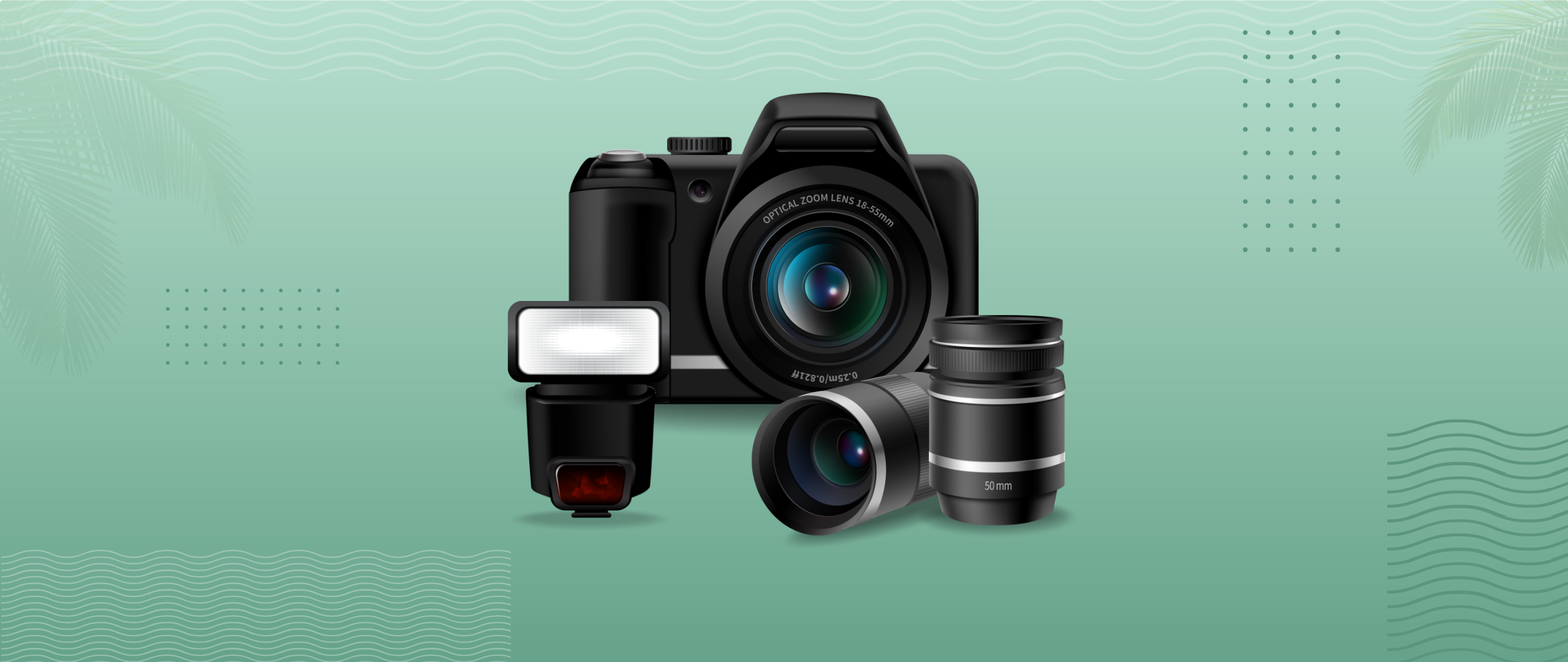For the past decade of helping companies express their narratives, we’ve learned that a flourishing business can’t make it without an effective brand strategy. All aspects from your content to culture to core services will suffer if there isn’t a unified identity. The challenge is often found in developing this foundation as it takes time and dedication—something which even we at times find difficult! Nevertheless, with commitment comes great reward: Your company benefits from enhanced exposure and presence within its respective marketplace.

The Beginning of Our Brand Strategy
Years ago, we began offering a broad portfolio of creative services. Sadly, though quite a few clients were uncertain who they were and what goals they wanted to achieve; their identity was either splintered or nowhere to be found.
Realizing that we needed to have a tool in place to smoothly create and document the company’s brand identity, we moved forward with a branding exercise. This specific resource asked all of the necessary questions while ultimately assembling essential information into one central document, which served as our starting point for any creative undertaking.
Our team has become proficient in crafting a comprehensive brand strategy, and we have applied what we learned from trial-and-error scenarios as well as tapping into resources from other experts in the field.
This new, simple, step-by-step process to create an effective and flexible brand strategy will help you…
- Uncover your authentic self and let your values and convictions be the light that guides you in making decisions that are beneficial for your people, business, and future.
- Communicate your brand consistently and effectively through every piece of content you make.
- Attract the right customers to build a strong, lasting brand.
- Position your brand in a way that helps you compete now—and tomorrow.
To simplify the process, we have supplied you with all the necessary resources and tools and real-world examples. This will assist in determining your brand’s soul to developing guidelines that accurately reflect it.
Kickstart your brand’s journey with our complimentary Brand Strategy Toolkit (below), complete with valuable templates, questionnaires, and checklists to guide you every step of the way.

As you progress through this guide, take the steps in order to ensure your brand strategy is built correctly. This way, it will be constructed on a solid foundation and ready for growth as your business flourishes over time.
Table of Contents
- What Is a Brand?
- What Is a Brand Strategy?
- Why Do You Need a Brand Strategy?
- What Team Do You Need to Build Your Brand Strategy?
- What to Know Before You Start Your Brand Strategy
- How to Build Your Brand Strategy
- Part 1: Find Your Brand Soul
- Purpose
- Vision
- Mission
- Values
- Part 2: Articulate Your Messaging
- Brand Essence (Personality, Voice, Tone)
- Value Prop
- Tagline
- Messaging Pillars
- Part 3: Design Your Visual Identity
- Logo
- Typography
- Color
- Imagery
- Illustration
- Photography
- Part 4: Create Your Brand Guidelines
- Verbal
- Visual
- Part 1: Find Your Brand Soul
- How to Bring Your Brand Strategy to Life
What Is a Brand?
The phrase “brand” has countless interpretations, and people frequently use it to refer to a logo that is placed on products or services. However, the idea of a brand goes far beyond just this physical mark; rather, it encompasses an emotional connection between customers and businesses. Every interaction with the business either fortifies or weakens this emotion-filled experience.
We define brand as what people think, feel, and say about your business. (This differs from marketing, which is what you say about your business.)

What Is a Brand Strategy?
As branding guru Marty Neumeier says, a brand strategy is “a plan for the systematic development of brand in alignment with a business strategy.”
A brand strategy is essential for understanding your identity and effectively conveying it to others. This plan will act as a guide that helps you share your unique story with the world. Our brand strategy is cleverly divided into three sections. We offer guidance on your Brand Soul (the core of your company), to articulate your Brand Messaging (how you talk about who you are), and Visual Identity (how you visually express your brand). When we’re finished, you’ll have a full brand strategy that is documented in concise and helpful brand guidelines so you can bring the boldness of your business alive.

Why Do You Need a Brand Strategy?
Without a clear knowledge of who you are, your purpose and mission, or the goals that guide your business operations, it can be difficult to stay on track. Struggling with customer relations to dealing with employee turnover; if there is no cohesive brand strategy in place these issues spread through all levels of an organization.
With a decade of experience in the industry, we have become well-versed in recognizing warning signs that indicate when an organization is facing brand crisis – often due to inadequate strategy. (We had been there too as our own company was once struggling with similar issues prior to creating and documenting our brand strategy.)
When you have no brand strategy…
- You don’t understand your purpose, vision, mission, or values, so you make marketing and business decisions that don’t reflect them.
- You don’t have a documented marketing plan, but you hope that whatever you’re doing will work.
- Your team is overwhelmed by disorganization, confusion, and disagreement. This has made it difficult for employees to be motivated and enthusiastic about their work.
- You don’t have cohesive brand messaging, so your content tends to be inconsistent at best, and contradictory at worst. As a result, it’s difficult to attract people who share your values (customers, employees, etc.).
- You can’t clearly articulate your brand, and as a result, you can’t carve out a discernible place in the market.
To put it simply, without a well-thought-out brand strategy, you lose.
What Team Do You Need to Build Your Brand Strategy?
To produce powerful and meaningful brand strategies, you need a committed group. With this collective of specialists dedicated to assessing, editing and executing your brand strategy, you can be assured that it will remain at the center of your company’s operations rather than being brushed aside or forgotten about.
Fortunately, making your brand team doesn’t have to be expensive or time-consuming. Even with a two-person squad, you can ensure that all the essential roles are covered.

What to Know Before You Start Your Brand Strategy
If you are beginning your brand strategy from the ground up (or aiming to do things correctly this time), there are two fundamental pieces of knowledge that you must understand. (If you’ve already created a brand strategy, these will be familiar.) They include:
1) Who You’re For (Marketing Personas)
Who is your target audience? What do they require or desire? How could their needs be better serviced and satisfied?
In order to generate an effective brand plan that establishes a strong bond with potential customers, you must recognize who specifically your target audience is. By understanding their needs and desires, not only will it provide insight into your company’s identity (aka Brand Soul), but also equip you with the knowledge needed to communicate effectively.
HOW TO DO IT
If you don’t know who you’re for, use the Personas Template in the Brand Toolkit, and follow our Article: How to Create Personas.
2) Who You’re Against (Competitive Analysis)
Who is sharing the same space as you? How will you secure attention for yourself amongst your competitors? What strategies will they be using that could potentially outshine you?
This invaluable info can help you recognize how special and distinctive your brand is, where it fits in or stands out from the competition, and most importantly of all – how to effectively communicate this uniqueness through your overall strategy.

HOW TO DO IT
Use the Competitive Analysis Template in the Brand Strategy Toolkit, and follow our article: How to Complete Your Competitive Analysis.
Once you have this information, you’re ready to dive into your brand strategy.
How to Build Your Brand Strategy
Follow these steps sequentially (as each builds on the prior), and you’ll end up with a comprehensive brand strategy that helps you share your story impactfully and effectively at every touchpoint.
Part 1: Find Your Brand Soul
A brand’s core values are an incredibly strong, influential force. Knowing and understanding them is essential for any business, as they can be the difference between achieving success or facing failure. When your business aligns with those beliefs, it will draw people in and cultivate a vibrant community that allows you to create whatever future you desire. That is the power of Brand Soul! When your beliefs are non-existent or harmful, you can easily push away both employees and customers, destroy your corporate culture, and make decisions that will obstruct future plans.
Your Brand Soul is comprised of four elements that help you clarify who you are, what you do, and why it matters.
- Purpose: Why do we exist?
- Vision: What future do we want to help create? What does the future look like?
- Mission: What are we here to do? How do we create that future?
- Values: What principles guide our behavior?
HOW TO DO IT
Use the Brand Soul Workbook in the Brand Strategy Toolkit, and follow our article: How To Find Your Brand Soul.
Note: While your Brand Soul is often an internal document, it can be translated into external-facing messaging everywhere from your website to your packaging, which is why it’s so important to have it nailed down from the beginning.
Part 2: Articulate Your Messaging
Congratulations on documenting your Brand Soul! Now, it’s time to discover and articulate how you will express who you are. Capturing the nuances of your Brand Essence (how to express who you are) and Brand Messaging (how to talk about who you are) is vital if you desire for your brand to outwardly reflect its core values honestly, authentically, and consistently.
Note: It can be tempting for brands to immediately move on to designing their visual identity (logo, colors, etc.) once they have established their Brand Soul. However, we would advise against this approach; such elements as your logo, colors, and typography are essential components of branding that communicate an entity’s essence and messaging. If you don’t understand what message you’re trying to convey it will be difficult to create a visually striking identity that encapsulates it successfully.
Of course, there’s always the possibility that you have already established your visual identity without considering all of these components. That was something we did ourselves a long time ago! But if you’re just starting out on this journey, it is essential to make sure that what lies in your soul and messaging are represented with precision through your visuals – no matter which order they come in.
Create Your Brand Essence
Your Brand Essence consists of your:
- Personality
- Voice
- Tone
Although it may feel intimidating to uncover your true essence, the process doesn’t have to be tedious. You already possess these qualities inside of you; they simply need a bit of intentional unearthing and documentation for them to be revealed.
1) Identify your personality. Your personality is a reflection of your Brand Soul, and it’s exuded through the characteristics and attributes that make you unique. Are you inquisitive? Refined? Eccentric? When you truly grasp who you are as an individual, it’ll bring more life to every aspect of your brand – from customer service practices to product descriptions. It’s a great approach for standing apart from competitors while deepening relationships with customers too.
HOW TO DO IT
Follow our article: How to Find Your Brand Voice
2) Identify your brand voice. Your brand’s voice is distinctive, so it should be articulated to ensure consistent messaging across all content. Keep in mind that a yogurt business speaks differently than an automobile company and different auto companies have their own distinct styles as well. As such, your personality naturally influences the development of your unique brand voice.
HOW TO DO IT
Use the Brand Voice Template in the Brand Toolkit, and follow our How to Find Your Brand Voice.
Remember: The words and slang you select communicate your identity in both obvious and subtle ways. Carefully consider how you want to come across- while also reflecting on the manner of dialogue that resonates with your customers most profoundly.
3) Identify your tone. Your brand’s tone is akin to its attitude and vibes. You might have a strong, authoritative voice but your manner of speaking should always be respectful. Consider your brand’s voice as the same regardless of context; however, you may adjust the tone based on who you are interacting with.
When unsure about the tone of your message, consider how you desire to make readers feel. Do you wish to sound like a helpful and compassionate neighbor or an elusive and mysterious partner?
To begin with, select at least 3 words that characterize your signature voice! (For example, Uber describes their tone as “Optimistic, inviting, bold.”)
Having a well-developed Brand Essence allows you to stay true to your identity everywhere from website pop-ups to tweets. (The brands we love most are usually those who practice this, no matter what their product is!)
Create Your Brand Messaging
With regard to crafting your brand strategy, a great place to begin is by creating compelling messaging that highlights who you are, what you do and why customers should select your company over the others. This could include devising an effective value proposition, tagline and messaging pillars.
1) Articulate your value prop. Your value proposition is a concise explanation of both the practical and emotional advantages your goods or services offer to customers. It’s not just what distinguishes you from others in the same field (your positioning); it’s also how you address their issues and why they should select you over other competitors.

Your customer’s promise of what they will receive if they buy from you is your brand’s ultimate success. You must have the answer to this question before anyone inquires, as it will be supported and strengthened in all future communication.
HOW TO DO IT
Follow our article: How to Craft Your Brand Messaging
2) Distill your tagline. Crafting the perfect tagline requires more than just an inspirational phrase – it’s a journey! Many companies don’t have their very own Don Draper to feed them the line of their dreams, so instead they must dive into brainstorms and revisions.
HOW TO DO IT
Follow our article: How to Craft Your Brand Messaging
3) Identify your messaging pillars. Your messaging pillars are the stories that define your unique brand identity. Everything you create should be aligned with these key messages, allowing them to consistently resonate across all of your touchpoints.
HOW TO DO IT
Use the Brand Messaging Template in the Brand Toolkit, and follow our How to Craft Your Brand Messaging.
Depending on your brand’s needs, you may want to articulate additional messaging elements, including:
- Brand promise
- Brand story
- Manifesto/compact
- Origin or founder story
- Elevator pitch
Part 3: Design Your Visual Identity
When considering branding, many of us think about a company’s visual identity: the logo, color palette, typeface and any other elements that act as the “face” of the brand. Now that you’ve settled on your soul/core message and values, it’s time to visualize them, and bring them to life with the basics:
- Logo
- Typography
- Color
- Imagery
A strong visual identity is meant to be purposeful, first and foremost. it should be done with an eye on the future. A successful visual identity should have a clear purpose in mind and remain timeless. So, an ideal visual identity is:
- Flexible: It should be able to grow with your brand, whether you’re branching out into new products, services, or even new industries.
- Comprehensive: It should provide brand designers and content creators with the tools they need to properly do their job.
- Intuitive: It should be intuitively designed and well constructed so that each element complements the other.
Note: Depending on your brand, you may need to expand your visual identity over time. If so, you might consider adding guidelines for additional visual elements.
Logo
A good logo is a memorable logo, and research shows that the most memorable logos are the simplest logos. You want it to reflect your brand, yes, but keep it simple if you want it to make an impact. You also need to consider how people visually process and assign meaning to images, as research has found that people assign different attributes to different shapes.
HOW TO DO IT
Stay Tuned: We’re releasing more helpful blogs and tools weekly. In the meantime reach out. We would be happy to help.
Typography
Typography is a natural addition to your logo, so we always prioritize logo design first. Nonetheless, typography matters more than ever for today’s consumers who encounter words across multiple platforms. It’s essential to keep in mind how your chosen typeface aligns with your brand identity and the diverse contexts it will be used in—what works well on packaging might not work as effectively on webpages or digital media!
HOW TO DO IT
Stay Tuned: We’re releasing more helpful blogs and tools weekly. In the meantime reach out. We would be happy to help.
Colors
Color is a potent and puzzling factor of branding. Research shows that it can have an influence on anything from brand recognition to buying motivation, yet mastering the science of color can be difficult due to its subjective nature. Since our perception of colors is unique, there is no guarantee that the same color will invoke similar emotions among different individuals.
HOW TO DO IT
Stay Tuned: We’re releasing more helpful blogs and tools weekly.
Imagery
In this era of visual communication, the use of images is essential to effectively represent your brand. Crafting a harmonious combination of photography and illustration cements an image that speaks volumes about who you are as a company.
Illustration
Establishing a recognizable illustration style is an effective way to market your content, yet don’t overdo it. Your design should be concise and on-theme, so avoid combining multiple styles or filling illustrations with unnecessary visual elements. Keep it distinct and unmistakable!
Photography
Photography is an effective, versatile tool that is less time-intensive to design. However, you need a clear aesthetic to keep it consistent with your brand. You should also consider the resources available to you. Luckily, there are plenty of sources to choose from.
- Stock sites (free): There is a ton of free, high-quality stock photography online, and you can easily create unique design treatments that turn a bland stock image into a photograph that communicates your brand. (Pexels, Unsplash, and StockSnap.io are great places to start.) Just make sure you clearly lay out the dos and don’t for things like filters, design treatments, resolution, etc.
- Image licenses (paid): There are a variety of photo services that let you license photos individually or as a subscription. They’re less likely to show up on your competitors’ site, but it can still happen as anyone can purchase them. Check out Shutterstock, Adobe Stock, and Alamy if you want to go this route.
- Custom (free or paid): We are living in a golden age of creation, thanks to the number of creative tools available to everyone. You can commission photography or let your team handle it, so long as they have the skills and tools to create high-res images.
Part 4: Create Your Brand Guidelines
Your brand guidelines serve as a playbook for how to use your brand, specifically in the content and communication you create. Maintaining quality and consistency can be a challenge, especially if you work with freelancers or outside agencies. Thus, your brand guidelines should include enough direction to empower any creator to produce work that strengthens the brand instead of weakens it.
To ensure your brand guidelines are comprehensive, include direction for both your visual and verbal identity.
- Verbal guidelines
- Brand essence (personality, voice, tone)
- Tagline
- Value prop
- Messaging pillars
- Anything else helpful or relevant
- Visual guidelines
- Logo
- Color
- Typography
- Imagery (photography, illustration)
- Hierarchy
- Iconography
- Data visualization
- Interactive elements
- Video and motion
- Etc.
Remember: A brand’s strength is determined by its consistency or lack thereof.
HOW TO DO IT
Once you’ve completed your guidelines, make sure you have a designated point person who can answer questions about applying the brand guidelines correctly, and make sure your guidelines are accessible to your team.
How to Bring Your Brand Strategy to Life
Now that you’ve completed the full brand strategy process, you can take a nap. Thanks to all your hard work, you officially have all the tools you need to communicate your brand story, align your brand and your business, and build the lasting relationships you need for long-term success. Of course, that work is never done.





Leave a Comment